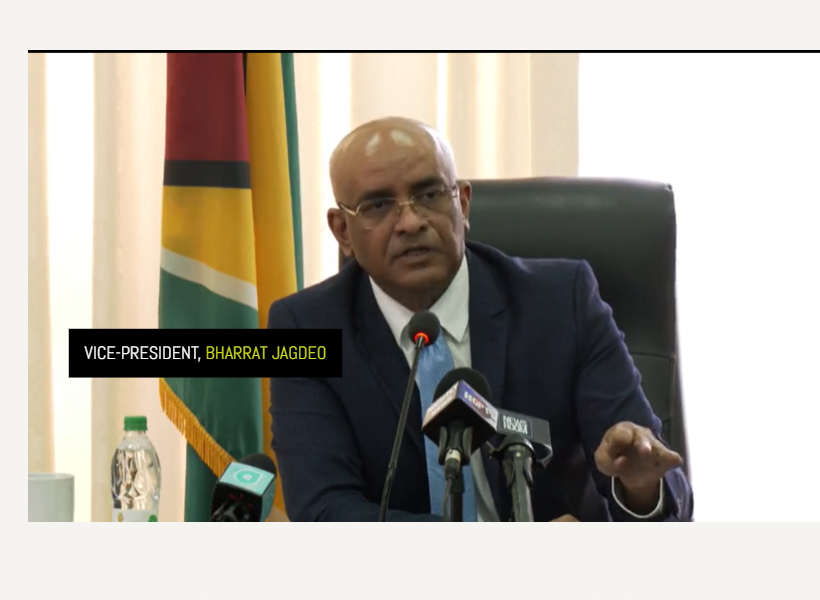During his press conference today, Vice President Dr. Bharrat Jagdeo addressed comparisons between the approach of Guyana and Suriname in distributing oil revenues to citizens. He referenced local media reports that contrasted Guyana’s $100,000 (US$500) cash grant programme, with a financial instrument recently announced by Surinamese President Chan Santokhi.
Jagdeo explained that while Suriname’s initiative offers citizens a share in future oil royalties, the structure and timing of the benefits are different from Guyana’s approach. “So in Suriname, this is a royalty they would have an IOU with like the citizens, from what I understand it to be,” he said.
The Vice President elaborated on Suriname’s system, noting that Surinamese are set to receive a share valued at US$750, with an annual interest payment of 7%. He noted too that Suriname’s distribution programme will come into being in 2028, when the Dutch-nation expects first oil.
According to Jagdeo, the financial implications of the 7% interest rate, highlighting that the annual return amounts to approximately US$50 per year.
To this end, he criticized media reports for drawing misleading comparisons. “So I see a lot of people…oh, look Suriname is giving out US$750 now and Guyana is only giving out US$500,” he said. He reiterated, “But that is not a cash payment. That’s a share in future revenue, starting from 2028 and you only get 7% of the US$750 per year. So it’s very, very different. I hope people don’t get caught up in this, a very misleading sort of propaganda there.”
Earlier this week, the Suriname head-of-state unveiled the royalty-sharing initiative. President Santokhi framed the initiative as a way to make Surinamese citizens “de facto owners” of the country’s natural assets.
In contrast, Guyana’s current system involves direct cash transfers to citizens from oil revenues already in hand. The government has already started this process and aims to distribute the grant to at least 300,000 Guyanese 18 and older by the end of the year. This first phase is expected to cater for public servants and pensioners.













